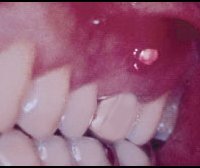What teeth can be used to resect the root?

In our time, dental surgeons are trying to do everything possible to keep the patient's tooth in a natural state. Contrary to the accepted opinion, tooth extraction is an extreme measure, and it is necessary to resort to it only when other methods of treatment do not help accurately. One of the most common methods of preserving the teeth is resection of the tip of the root of the tooth or apexectomy of the tooth root. The essence of this operation is to remove only a part of the root, which is the focus of infection, while only part of the root of the tooth is removed, which is unaffected by treatment, the cyst itself is removed, healthy tissues remain intact and intact.
On what teeth the root tip is resected
The operation of root resection is relatively low-traumatic and not long, although it is one of the most difficult in surgical dentistry. In most cases, it is carried out on the front teeth in the upper jaw( lateral and frontal incisors or canines).Before the surgery, the doctor carefully examines the tooth chosen for the operation, makes the necessary X-ray, and also identifies the site of infection. Before root resection, the root canal is sealed( hermetically).
Resection of the root is performed on the teeth with chronic periodontitis, which can not be eliminated by conservative methods of treatment;at excessive deducing for an apex of a root of a filling material at endodontic therapy;with pathological changes in the bone tissue near the tip of the root of the tooth, which was previously sealed( formation of a cyst or granuloma).Also on the teeth with a perforation( hole) of the root wall in the tip zone;Fracture of the root of the tooth in the upper part;when the root is not available for treatment( for example, it is located under the crown of the bridge).
Resection of the root of the tooth is also necessary in cases where the root canal is impassable due to the peculiarities of the anatomical structure for the instruments, firmly blocked by some foreign body and the subsequent tooth treatment is very difficult. This operation provides an approach to the root canal for its qualitative sealing. Absence of a toothache does not mean absence of indications for this operation. Granulomas and cysts, for example, do not let people know about themselves for a long time, and then suddenly appear in the most unpleasant way.
It is inadmissible to carry out a resection of the root on the teeth, when the granuloma or cyst is inflamed;if there is a strong mobility of the teeth( periodontitis), cracks( as the tooth may collapse during the procedure), extensive destruction of the coronal part of the tooth( there is no chance of prosthetics on this tooth).It is also inappropriate to perform a resection of the apex, when the root of the tooth tightly touches the roots of adjacent healthy teeth or is surrounded by granuloma more than a third of its length.
The operation is performed under local anesthesia. The incision is performed on the gum, opening access to the bone tissue, the inflamed root area, and also the infected tissues around it are removed. In this case, the specialist gets access to the root canal of the tooth, which is covered with high quality and reliable by the filling material, in order to avoid the development of repeated infections, healthy tissues in the adjacent zone are thoroughly washed with antiseptic solution. The bony cavity is filled with a special osteoplastic material, which promotes the acceleration of the regenerating processes. At the end, the incised part of the gum returns to its place and sutures.
After resection of the apex of the root, there is usually a small swelling of the gum along the surgical zone, which causes some discomfort. But after a few days the swelling is gone, unpleasant symptoms disappear. If you follow all the recommendations of the dentist, then after resection of the root, the tooth is retained for a very long time.



